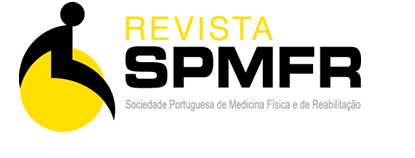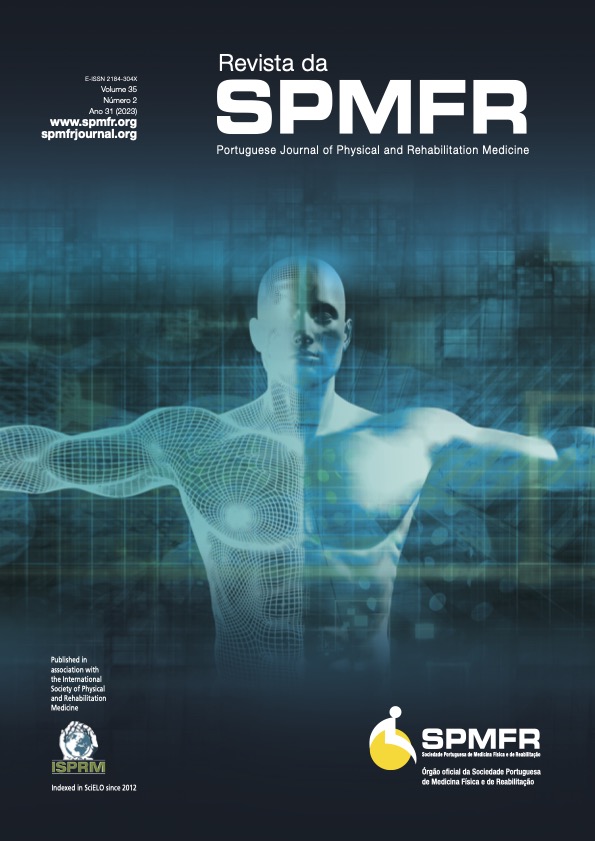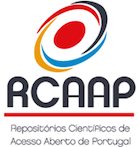Achados Clínicos e Imaginológicos Após Fonoaudiologia Intensiva em Afasia Pós-AVC: Relato de Caso
DOI:
https://doi.org/10.25759/spmfr.458Palavras-chave:
Acidente Vascular Cerebral/complicações, Afasia, Recuperação de Função, Ressonância MagnéticaResumo
Doente do sexo feminino, 45 anos, sofreu um acidente vascular cerebral no contexto de um aneurisma dissecante da artéria cerebral média esquerda, o qual resultou numa afasia de expressão persistente. Devido a uma resposta clínica mínima após 1 ano de tratamento de reabilitação, realizou-se uma avaliação e orientação terapêutica dirigida e intensiva, baseada nos défices específicos da doente. Foram reportadas melhorias significativas nas escalas cognitivas, de linguagem e funcionais aplicadas. Adicionalmente, também em imagens de ressonância magnética funcional foi documentado um aumento global na ativação cortical, especificamente nas áreas da linguagem. Apesar da evidência demonstrar que a maioria da recuperação neurológica ocorre nos primeiros 6-9 meses após lesão vascular cerebral, este caso exemplifica que uma recuperação adicional pode ocorrer mais tardiamente, dependendo de um tratamento intensivo e individualizado. Adicionalmente, realçamos que o número de ativações na ressonância magnética funcional é, por si só, duvidoso como outcome surrogado da recuperação neurológica; contudo, estas alterações em paralelo com a melhoria clínica são uma informação a valorizar.
Downloads
Referências
Small SL, Buccino G, Solodkin A. Brain repair after stroke-a novel neurological model. Nat Rev Neurol. 2013;9:698-707. doi: 10.1038/nrneurol.2013.222.
Brady MC, Kelly H, Godwin J, Enderby P, Campbell P. Speech and language therapy for aphasia following stroke. Cochrane Database Syst Rev. 2016:CD000425.
Iorga M, Higgins J, Caplan D, Zinbarg R, Kiran S, Thompson CK, et al. Predicting language recovery in post-stroke aphasia using behavior and functional MRI. Sci Rep. 2021;11:8419. doi: 10.1038/s41598-021-88022-z.
Wong GK, Mak JS, Wong A, Zheng VZ, Poon WS, Abrigo J, et al. Minimum Clinically Important Difference of Montreal Cognitive Assessment in aneurysmal subarachnoid hemorrhage patients. J Clin Neurosci. 2017;46:41-4. doi: 10.1016/j.jocn.2017.08.039.
Beninato M, Gill-Body KM, Salles S, Stark PC, Black-Schaffer RM, Stein J. Determination of the minimal clinically important difference in the FIM instrument in patients with stroke. Arch Phys Med Rehabil. 2006;87:32-39.
Hamilton RH, Chrysikou EG, Coslett B. Mechanisms of aphasia recovery after stroke and the role of noninvasive brain stimulation. Brain Lang. 2011;118:40-50.
Stockert A, Wawrzyniak M, Klingbeil J, Wrede K, Kümmerer D, Hartwigsen G, et al. Dynamics of language reorganization after left temporo-parietal and frontal stroke. Brain. 2020;143:844-61. doi: 10.1093/brain/awaa023.
Shimizu T, Hosaki A, Hino T, Sato M, Komori T, Hirai S, et al. Motor cortical disinhibition in the unaffected hemisphere after unilateral cortical stroke. Brain. 2002;125:1896-907. doi: 10.1093/brain/awf183.
Gold BT, Kertesz A. Right hemisphere semantic processing of visual words in an aphasic patient: an fMRI study. Brain Lang. 2000;73:456-65.
Rosen HJ, Petersen SE, Linenweber MR, Snyder AZ, White DA, Chapman L, et al. Neural correlates of recovery from aphasia after damage to left inferior frontal cortex. Neurology. 2000 26;55:1883-94. doi: 10.1212/wnl.55.12.1883.
Stefaniak JD, Halai AD, Lambon Ralph MA. The neural and neurocomputational bases of recovery from post-stroke aphasia. Nat Rev Neurol. 2020;16:43-55. doi: 10.1038/s41582-019-0282-1.
Saur D, Lange R, Baumgaertner A, Schraknepper V, Willmes K, Rijntjes M, et al. Dynamics of language reorganization after stroke. Brain. 2006;129:1371-84. doi: 10.1093/brain/awl090.
Downloads
Publicado
Como Citar
Edição
Secção
Licença
Os manuscritos devem ser acompanhados de declaração de originalidade, Autoria e de cedência dos direitos de propriedade do artigo, assinada por todos os Autores.
Quando o artigo é aceite para publicação é obrigatória a submissão de um documento digitalizado, assinado por todos os Autores, com a partilha dos direitos de Autor entre Autores e a Revista SPMFR, conforme minuta:
Declaração Copyright
Ao Editor-chefe da Revista da Sociedade Portuguesa de Medicina Física e Reabilitação
O(s) Autor(es) certifica(m) que o manuscrito intitulado:
____________________________________________________________________ (ref.Revista da SPMFR_________) é original, que todas as afirmações apresentadas como factos são baseados na investigação do(s) Autor(es), que o manuscrito, quer em parte quer no todo, não infringe nenhum copyright e não viola nenhum direito da privacidade, que não foi publicado em parte ou no todo e que não foi submetido para publicação, no todo ou em parte, noutra revista, e que os Autores têm o direito ao copyright.
Todos os Autores declaram ainda que participaram no trabalho, se responsabilizam por ele e que não existe, da parte de qualquer dos Autores conflito de interesses nas afirmações proferidas no trabalho.
Os Autores, ao submeterem o trabalho para publicação, partilham com a Revista da SPMFR todos os direitos a interesses do copyright do artigo.
Todos os Autores devem assinar
Data:
Nome(maiúsculas)
Assinatura
Relativamente à utilização por terceiros a Revista da SPMFR rege-se pelos termos da licença Creative Commons “Atribuição – uso Não-Comercial – Proibição de Realização de Obras derivadas (by-nc-nd)”.
Após publicação na Revista SPMFR, os Autores ficam autorizados a disponibilizar os seus artigos em repositórios das suas instituições de origem, desde que mencionem sempre onde foram publicados.
OS AUTORES DEVERÃO SUBMETER UMA DECLARAÇÃO DE CONTRIBUIÇÃO / CONTRIBUTORSHIP STATEMENT INDICANDO O TIPO DE PARTICIPAÇÃO DE CADA AUTOR NO ARTIGO. Mais informações: https://authors.bmj.com/policies/bmj-policy-on-authorship/



